#vulnavia
Explore tagged Tumblr posts
Text

The Abominable Dr Phibes! One of my favorite movies of all time. Set in the 1920s, filmed in the 1970s, featuring Vincent Price clearly having a great time as his character (Phibes) kills a variety of characters in increasingly improbable ways
#my art#the abominable dr. phibes#dr phibes#70s movies#70s horror#vincent price#robert fuest#vulnavia#this was also released on my birthday! me & dr phibes hand in hand#I actually drew this for the 50th anniversary 2 years ago
179 notes
·
View notes
Text
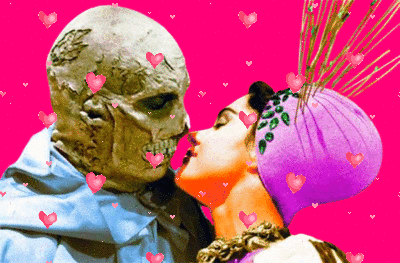
Love is never having to say you're ugly...The abominable Dr Phibes.
38 notes
·
View notes
Text

12 notes
·
View notes
Text

Valentines come and go, but Vulnavia is forever.
#vulnavia#the abominable dr. phibes#virginia north#dr phibes#vincent price#women in horror#murderesses#film#horror
36 notes
·
View notes
Text
I like to think that Vulnavia is just a music grad student and Phibes is her thesis advisor. Yes, she thinks all the elaborate staged scenes for nobody in particular and the theatrical, Rube Goldberg-esque murders are weird. No, she's not going to say anything. She only has two more months of this shit to go.
#also the recast vulnavia is not as good. she's too self-conscious. and too wiggly#the abominable dr phibes
4 notes
·
View notes
Photo
Watched The Abominable Dr. Phibes for the first time and thinking we just don't dress henchmen like we used to.









#the abominable dr. phibes#vulnavia appreciation post#a style icon for villainous assistants everywhere#i'm obsessed
27 notes
·
View notes
Text
So...who has theories about Vulnavia - Dr Phibes' silent, beautiful, expressionless, "fashionable", violin-playing woman of all work?
My personal theory is that she is a significantly more advanced animatronic of Dr Phibes' design. I have no real evidence for this, but the theory pleases me.
2 notes
·
View notes
Text

Vincent Price as Dr. Phibes”
1. One of Vincent Price’s greatest roles was in “The Abominable Dr. Phibes” (1971). In it he played a brilliant artist and scientist who was horribly disfigured and thought dead as he raced back to London to see his wife. She was undergoing a life and death operation which, alas, she died. Phibes swore revenge on the 10 doctors and nurses who participated in the surgery.
2. Phibes murder spree was inspired by the Ten Plagues of Egypt from the Old Testament. Each was more gruesome than the last, but they were all done with panache. Phibes was assisted by Vulnavia (a beautiful but silent young woman) and he was accompanied by a stylish life-size clock work band.
3. After neatly eliminating all his targets, Phibes evaded capture by laying down in a hidden double sized coffin with his wife body.
4. Dr. Phibes (and Price) rose again in the 1972 sequel. After a few years of literally laying low, he returned so that he could bring his wife’s body to Egypt and resurrect her via ancient secrets he had discovered. Somehow Vulnavia returned to assist him again (even tho she died in the last movie).
5. But Phibes’ Egyptian cure-all is also sought by Darius Biederbeck (Robert Quarry) who is suffering with a kind of Dorian Grey type curse. Quarry is best known for his Count Yorga movies (Dracula knock-offs).
6. Sooner than you can say cruise-ship, the adversaries are headed off to Egypt, with Phibes leaving a trail of victims behind him.
7. The cast included three actors from the original. Peter Jeffrey returned as Inspecter Trout. After a few odd murder victim are found, Trout suspects Phibes has returned when he learned the cruise ship’s cargo included a life-size clock work band. Terry-Thomas returns in a new role (his character was exsanguinated in the first film). And Hugh Griffith who survived the first film but not so the second.
8. Although I enjoyed seeing Price as Phibes, the sequel didn’t reach the heights of the original. In the first, Phibes was driven by revenge, with a clearly set list of victims. That helped drive the plot. He also had clever ways of killing via the ten plagues of Egypt - so you could wonder or anticipate how he would accomplish the next.
9. But in the sequel, those key elements were gone, and while some of the murderer were inventive, they were just a series of people who got in his way.
10. A third Phibes movie was discussed but It didn’t help that Quarry and Price didn’t get along during production. It was reported that one day, Quarry was singing in his dressing room and he asked Price:
Quarry: "You didn't know I could sing did you?"
Price replied: “Well I knew you couldn't act."
#Vincent price#horror films#Abominable Dr. Phibes#Ten Plagues of Egypt#Peter Jeffrey#terry thomas#Robert Quarry#count yorga vampire
5 notes
·
View notes
Text
the shit i was finding in my moms closet was actually insane. entering my dr phibes vulnavia era fr i gotta start going to more formal events
4 notes
·
View notes
Text
Am I the only one who noticed the duality in the TADP? Like...
There are two worlds - the world of regular people, full of scurrying, their jobs and works, just regular stuff. People are so concentrated on their daily routine, policemen are working restlessly.
And there is the world of Phibes, full of music, unusual things and metaphors. He dances with Vulnavia after commiting a horrible crime. As if the world around them doesn't exist. As if there are no responsibilities. Just so carefree and sweet, as if nothing else means anything to him.
5 notes
·
View notes
Text


Fashionistas
#the abominable dr. phibes#dr phibes#vincent price#doodling to get back in the habit#I love vulnavia and phibes’ dynamic. no need to chat. either they’re killing or they’re chilling#my art
47 notes
·
View notes
Text
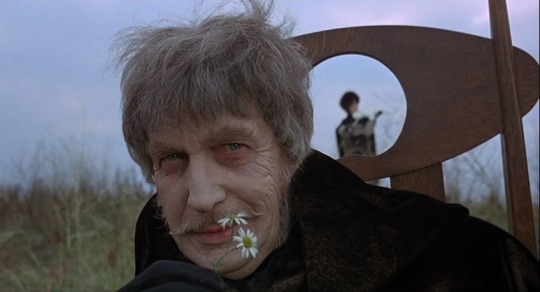
The Abominable Dr. Phibes (1971)
In the late 1950s and 1960s, American International Pictures (AIP) was a minor Hollywood studio with an outsized reputation. AIP, which made nothing but low-budget pictures and B-movies during its existence, focused on cornering the market for teenagers and young adults. Rather than making an endless string of superhero movies, AIP instead relied on its Beach Party series and related films (1963-1967) and inexpensive horror movies (usually involving producer/director Roger Corman). One of AIP’s mainstays for its coterie of horror films was none other than Vincent Price. A longtime character actor for 20th Century Fox, Price had only begun to regularly feature in horror films beginning with House of Wax (1953). From there, he became a regular on AIP’s Edgar Allan Poe adaptations (very loose adaptations, mind you) under Corman’s direction. No matter how dastardly Price’s characters schemes were in his numerous horror films, Price’s almost effortless charm always pored through, to the point that one cannot help but root for his schemes to succeed.
Though Roger Corman was not involved in The Abominable Dr. Phibes (Phibes rhymes with “bribes”), a portion of Price’s fans point to his performance here in the title role as the Vincent Price-iest of all. In this darkly comedic horror film directed by former production designer Robert Fuest (the 1961-1969 TV series The Avengers, director on 1970’s Wuthering Heights), the film’s deliberate campiness demands more absurd motivations, plot developments, and aesthetic choices than some viewers might be comfortable with. In short, this is not the ideal introduction to Vincent Price or AIP’s horror movies. To enjoy the first Phibes film is to be in on the joke, to accept the film’s inherent silliness.
The opening credits help set that mood. As they roll, Dr. Phibes (Price) ascends from beneath a flight of stairs, playing on organ Felix Mendelssohn’s “War March of the Priests” from Athalie. His only company in this fiendish lair are his tall, silent assistant Vulnavia (Virginia North) and his animatronic band, the Dr. Phibes Clockwork Wizards. Reported killed in a Switzerland car accident in 1921 alongside his wife Victoria, Phibes (who carries heavy facial scars and lost his speaking voice in the crash) is hellbent on seeking revenge against the British doctors who presided over Victoria’s failed surgery. Instead of going to therapy, Phibes murders the doctors instead. One after another, the doctors die in increasingly elaborate ways – each homicide inspired by one of the ten Plagues of Egypt as described in the Book of Exodus. After the third doctor dies, Scotland Yard finally begins connecting the dots under Inspector Harry Trout (Peter Jeffrey). Trout soon realizes that the deceased were all directed by Dr. Vesalius (Joseph Cotten). This revelation only begins to unearth Phibes’ wicked plot.
Elsewhere, Hugh Griffith plays a helpful Rabbi and Terry-Thomas plays one of the doctors. Derek Godfrey and John Cater play Inspector Trout’s superiors, Crow and Weaverly, respectively. Aubrey Woods, whom most know as Bill the Candy Man from Willy Wonka and the Chocolate Factory (1971), plays an eyewitness named Goldsmith.
youtube
The screenplay by William Goldstein (who returned for the sequel), James Whiton (his only major writing credit), and Fuest, is no one’s idea of sensible, intelligently structured writing. The transitions between the scenes involving Phibes, his assistant, and the victims to Scotland Yard and Dr. Vesalius are untidy. Goldstein, Whiton, and Fuest attempt to make more of a mystery out of this film than they should, but it only serves to make the investigatory half of the film as a dumping ground of expository dialogue. The scenes with Phibes are the zanier, far more interesting parts of the screenplay – even though the character can no longer speaker (the writers engineer an inexplicable workaround, but this unlikely development can have a pass in the context of this bizarre work). For the scriptural scholars among us, some of the stylish killings of the unsuspecting doctors take liberties with the stated Ten Plagues of Egypt. Though perhaps unacceptable to those demanding strict adherence to the holy texts, the thematic divergences of those murders are still so cockamamie that most viewers probably do not mind.
Dr. Phibes’ murders would make Jigsaw from the Saw series (2004-present) proud. To be clear, The Abominable Dr. Phibes is not a slasher film (a subgenre that was beginning to find its foundations by the early 1970s), but it contains elements that would become slasher hallmarks – an individual committing several revenge killings due to a past event, a sort of catharsis (in later slasher movies, sexual gratification) in the act of killing, and unusual manners of murder. Instead of horrifying the viewer with the wanton death, it is Vincent Price’s performance that keeps The Abominable Dr. Phibes within the confines of comedic horror. Due to reasons that I do not wish to spoil, Price’s Phibes scarcely makes a facial expression aside from his default, neutral gaze. His gait is deliberate and steady. Without the possibility of any facial muscular contortions or Price’s trademark smirk, so much of Price’s performance is through his eyes. From his thousand-yard stares, contemptuous gazes, world weary looks, and bemused glances, Price provides an enormous amount of the film’s soul and tenor with so little of his body. This sounds like a silent film director’s dream, but Price’s performance is a commanding one, in any era. His Dr. Phibes may not be in full control of his movements (thanks to Trevor Crole-Rees’ excellent makeup design), but Price is always fully in control of his acting. No surprise to anyone who knows Price’s work – always dependable to provide his utmost effort, no matter how dire the material.
The screenplay, nevertheless, keeps some emotional distance between the audiences and the title character. Though the film’s absurdity allows the viewer to scrap their sense of morality while watching Phibes slaughter each of the doctors, Phibes’ psychology is inaccessible until the film’s second half. The filmmakers, by not prioritizing Phibes’ mindset as much as they could, continually frame him as the villain amid bumbling detectives, the privileged victims (ensuring that the viewer cares not too much about their deaths), and the prideful Dr. Vesalius (whose hubris erodes as the film progresses, revealing his desperate humanity).
If anybody could be considered a co-lead here, that would be Joseph Cotten as Dr. Vesalius. The underrated and undermentioned Cotten, not at all known for his horror work and more for his collaborations with Orson Welles (namely 1941’s Citizen Kane and 1942’s The Magnificent Ambersons), performs ably here. Cotten replaced Price’s friend, Peter Cushing (Grand Moff Tarkin in 1977’s Star Wars, a regular as Baron Frankenstein and Van Helsing in Hammer horror movies), after Cushing fell ill. Cushing would have been ideal in the role, but never does Cotten act as if the unconvincing dialogue is beneath him, even if he doesn’t attempt to hide his American accent. As Dr. Vesalius, Cotten wonderfully inhabits his character’s desperation as his colleagues meet their ends, as if prophesied.
Set designer Brian Eatwell (1973’s The Three Musketeers, 1976’s The Man Who Fell to Earth) runs rampant with his design to Phibes’ lair. A curious combination of art deco and the garishness of 1970s colors serves the film’s ludicrousness. I am not sure how livable Phibes’ abode is – there are nary any bedrooms or any other amenities depicted – but the central chamber could be an ideal place for a raucous, demented soiree. Vulnavia’s ever-changing wardrobe in each of her scenes is also a delight, thanks to costume designer Elsa Fennell (1964’s Goldfinger, 1971’s Diamonds Are Forever). Perhaps there isn’t too much of association between campy costumes and sets with heartrending motives for murder, but that is exactly what transpires in The Abominable Dr. Phibes.
In addition, a laughably anachronistic soundtrack of swing jazz and Great American Songbook standards dot the film. I was not prepared for the appearance of either Mendelssohn’s “War March of the Priests” nor the legendary song that rounds out the closing credits. Phibes’ introduction while playing the former on organ readies the viewer not to take everything that is about to unfold seriously. For the latter song (again, I dare not spoil this), a brilliant solo trumpet takes the easily recognizable melody and swings it. Lyrically, this song’s placement in the end credits is fitting for what happens to Phibes. But I could not help but laugh the moment I heard the opening notes – a fitting send-off to a gleefully daft movie.
When The Abominable Dr. Phibes arrived in theaters, its poster showed the mutilated Dr. Phibes appearing as if he is about to kiss a woman. Above them read the tagline: “Love means never having to say you’re ugly.” This was a reference to Love Story (1970), with its (in)famous tagline and in-movie quote: “Love means never having to say you’re sorry.” The marketing for The Abominable Dr. Phibes confused audiences – was it a romance? horror? parody? – and the film struggled initially before AIP retooled its advertising to market the film as a horror film. On its low budget, the film was successful enough to warrant AIP to greenlight a sequel, Dr. Phibes Rises Again (1972). That sequel marked the beginning of the end of Price’s association with AIP, due to conflicts over his pay (while AIP’s box office fortunes were dwindling), his lack of satisfaction with the scripts coming his way (not even Price wanted to star in two Dr. Goldfoot movies in two years), and AIP’s plans to replace him with Robert Quarry as their primary horror star.
In the years since the film’s debut in cinemas, The Abominable Dr. Phibes has garnered a deserved cult status. There was no stopping Vincent Price from leaving AIP, but AIP – with their Robert Quarry plans not even a secret – somehow undervalued the actor who was their principal attraction through the 1960s. An essential in Price’s filmography, The Abominable Dr. Phibes defies genre conventions, genre categorization, and any semblance of rationality. For those looking for some bloody horror as the mercury drops, look no further than here. The first Dr. Phibes films guarantees murders with a wink and, though not a smile, an animatronic band playing hits that have yet to be composed.
My rating: 7/10
^ Based on my personal imdb rating. My interpretation of that ratings system can be found in the “Ratings system” page on my blog. Half-points are always rounded down.
For more of my reviews tagged “My Movie Odyssey”, check out the tag of the same name on my blog.
#The Abominable Dr. Phibes#Robert Fuest#Vincent Price#Joseph Cotten#Peter Jeffrey#Virginia North#Hugh Griffith#Terry Thomas#Derek Godfrey#John Cater#Aubrey Woods#William Goldstein#James Whiton#Sean Bury#John Laurie#Trevor Crole-Rees#Maurice Kaufmann#TCM#My Movie Odyssey
4 notes
·
View notes
Text

Virginia North as Vulnavia, The Abominable Dr Phibes...
5 notes
·
View notes
Text
everyone's tavs: GloriaVictoria Vulnavia, Darkknife, Scaramouche Fingereater the Fallen, Sarcophagus Esophagus
me: macaroni :)
2 notes
·
View notes
Text
Movie #101: The Abominable Dr. Phibes

Release: 1971
Duration: 1 hour 34 minutes
Director: Robert Fuest
I��m gonna be honest I loved this movie. It’s set in the 1920s, I’m pretty sure 1921 in London. It’s about a man named Anton Phibes who got into a car accident with his wife and was disfigured by it. He was presumed to be dead and his wife died during operation. He blames the surgeons for her death and with the help of an assistant, Vulnavia, creates a mask that looks like his face and kills the surgeons using methods inspired by biblical plagues.
I get how this movie wouldn’t be for everyone but I thought it was great. The last 20 minutes were really exciting.
3 notes
·
View notes
Text
I have a truly unreasonable amount of love for the Abominable Dr. Phibes movies. Yes, both of them. The sequel is different, but it’s just as batshit, and I enjoyed the conceit of setting Phibes up against an equally evil and supernatural foe, and Phibes taking that with all the calm aplomb of a man who worships his dead wife, has a possibly demonic clockwork assistant, and who has murdered quite a few people in elaborate and suitably biblical fashion. The movies are just delightfully insane.
The first movie opens with Phibes, shrouded behind a hooded black cloak, playing dramatically on an organ with his clockwork orchestra behind him, then waltzing with his seemingly human but inhumanly emotionless assistant inside a pink 70s version of a 1920s art deco villain lair, before going out to murder a man in his bed using bats, supposedly in echo of the 10 Plagues of Egypt. Which featured bats, obviously. This is, like, the first five minutes of this movie. It’s amazing.
It's also one of the few Vincent Price movies where he’s playing a mute, so while you do hear the iconic voice here or there, it’s usually via recordings. Phibes is also horrifically scarred and covering it using prosthetics, so Price is playing him deliberately stiff and strange and off putting. He and his beautiful assistant Vulnavia (played by Virginia North, and yes, that is her character’s name) are played as silent and rather inhuman forces of vengeance. In … extremely over the top 70s fashion. So it’s both a fantastic illustration of Price’s talent, and also extremely cheesy, and I love it an unreasonable amount.
If … I was going to say if you pick any movie on this list, pick this one, but actually, I also adore House on Haunted Hill, The Raven, Witchfinder General, Last Man on Earth … Vincent Price has a lot of excellent movies, and you can actually basically take your pick. But. I do have a genuinely unhealthy amount of love for the Phibes movies, and I do definitely recommend them!
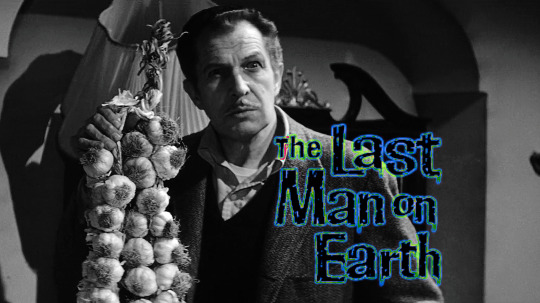






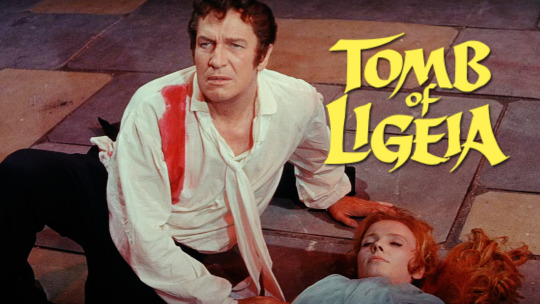
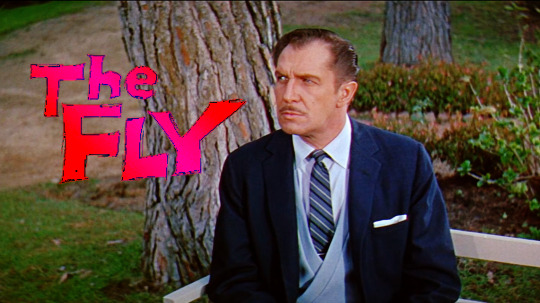
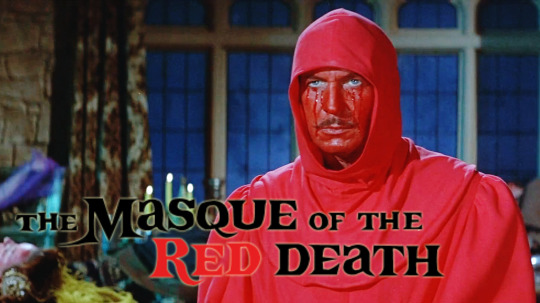
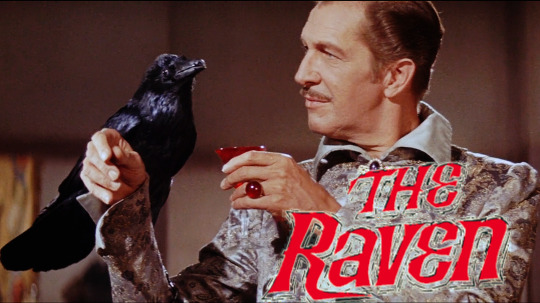
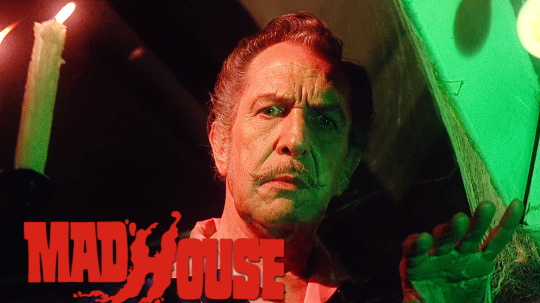

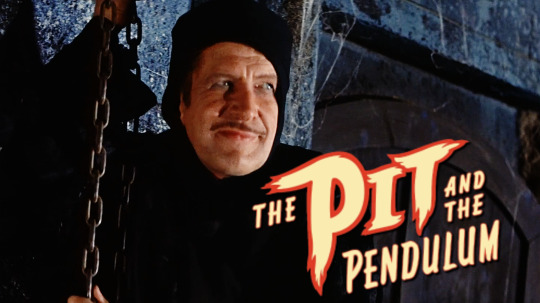
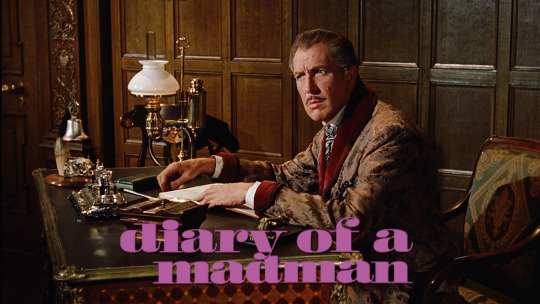

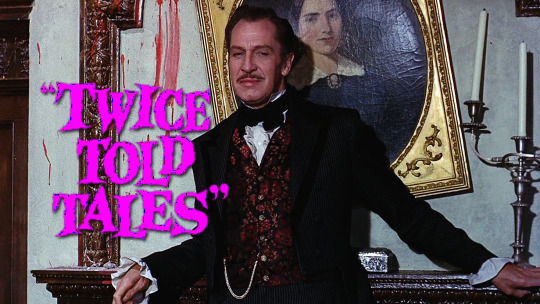
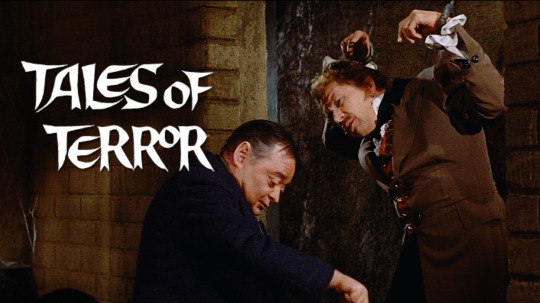
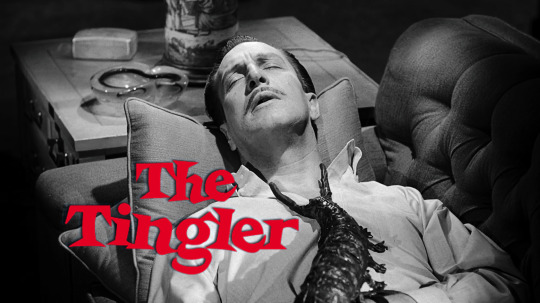


Halloween is almost here, bitches!
I've been asked multiple times which Vincent Price movie I recommend.
Here are some of my favorite Vincent films. If you're a horror buff, and even if you're not - these movies are amazing and I highly recommend them!!
#vincent price#horror#the abominable dr phibes#horror movie recs#try any of them honestly#but i do have a soft spot for this one particularly
753 notes
·
View notes